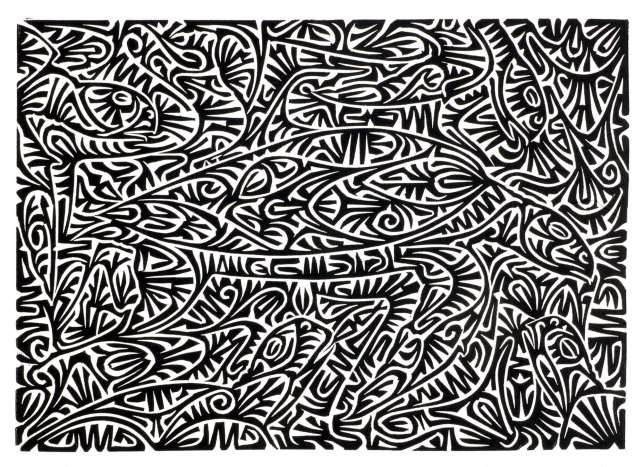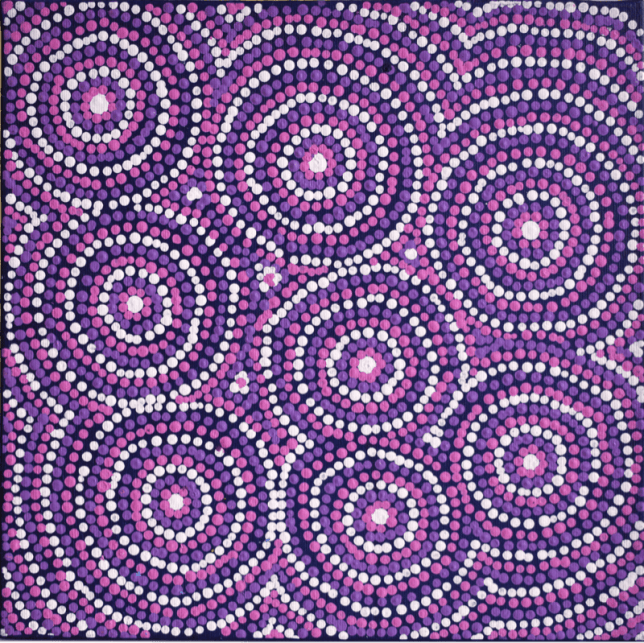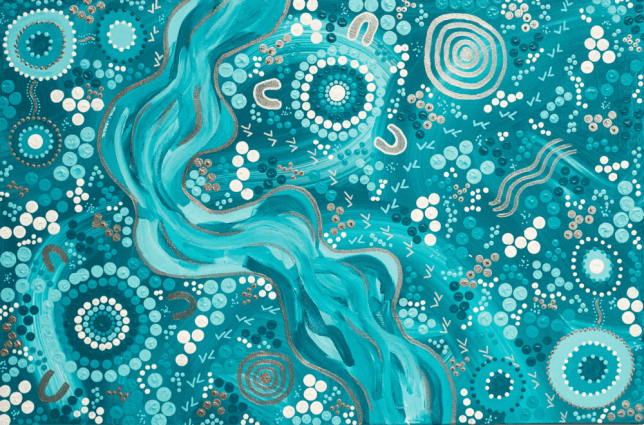
Aboriginal Art in the Art Market
Over the last thirty years, the Aboriginal art market has grown steadily. Now it is an incredibly alluring investment for any well-informed collector. In 1989, sales from Aboriginal artwork were less than AUD 18 million, but had risen to AUD 300 million by 2011. Find out more about this fascinating genre and its place in the world of art…

An increase which shows no signs of stopping
Since the 90s, there has been an increased interest in Aboriginal art on the artistic scene. The enthusiasm surrounding it is mainly due to a series of specialized – and highly publicized – auctions in 1997 organized by Australian Sotheby’s. Since then, revenues from public sales of Aboriginal art have drastically increased. For example, in June 1997, Water Dreaming at Kalipinypa by Johnny Warangkula Tjupurrula, sold for €125,000 at the Australian Sotheby’s. Three years later, in 2000, its value soared to €270,000 in the same auction house.
Between new artists and the already established names in Aboriginal art, prices vary. For young artists, a piece can be sold anywhere between one hundred euros to a few thousand euros. Meanwhile, the work The Olgas for Ernest Giles by Brett Whiteley, sold for more than 2 billion dollars in 2007. The market peaked in 2007, but this was followed by a period of steep decline in turnover for auction houses, which leveled out in 2014. 2015 saw a particularly prosperous year, with a rise of more than 40 points according to the AIAM100 index. This also explains the interest of art dealers in this accessible and promising market.

Is Aboriginal Art Contemporary Art?
Auction houses seem to ignore the highly contemporary aspect to this type of art. Instead, they include Aboriginal art in the category: “ancient and ethnographic art”. Meanwhile, Australian contemporary artists are presented in the category “Paintings, drawings and sculptures”. This distinction could lead to Aboriginal art being lost, even though it is very much alive within the contemporary art scene.
In fact, the french market is particularly active in this category. Galleries specializing in Aboriginal art, such as Arts d’Australie – Stéphane Jacob, directly collaborate with art centres who promote aboriginal art and provide security for artists. Unlike auction houses who almost exclusively concentrate on the historical aspects of a work, galleries highlight the artist who made it.
With regards to this, the market for Aboriginal art has raised many questions about the artist’s rights by western standards. This is because many are works that have been made traditionally, so often collectively, but one artist has taken claim for the work. This same problem should have arisen with a number of western artists. See Henry Moore who frequently worked with apprentices and assistants. Or even Rodin who worked with a foundry to cast his bronzes and then let one of the sculptors finish the details for him. So, it is very important to inquire about the origin of a work and to verify its authenticity.

A legacy of tradition and expertise
Works created by politically and economically isolated traditional societies are called Aboriginal art. The motifs that are found on the actual works are similar to those found on rocks, bark or even on the bodies of Aboriginal people. They symbolise the link between the Aboriginal people and the spiritual world or recount journeys and teachings of their ancestors. First produced more than 50,000 years ago, it is the oldest living art form. Often produced on a small scale, these works have an important function in the daily life of these societies.

Aboriginal art: A double-edged sword
Since their introduction to the market, many artists have managed to make their mark such as Rover Thomas, or Clifford Possum Tjapaltjarri. The first Aboriginal artist to be recognized worldwide was Brett Whiteley who has established himself as the most highly regarded Australian artist of the decade. The success of these artists is often dazzling. This is as few artists in this category are on the market and therefore works are limited in availability. However, when an Aboriginal artist loses their authenticity, their value decreases quickly. So the personal history of an artist is particularly linked to their success with collectors.

An art supported by public institutions
Aboriginal paintings, or the art of the “dreamers” from the Australian bush and deserts, fascinate the West and public institutions. For example, the Quai Branly and the Musée des Confluences de Lyon are increasingly opening their doors to it. Each exhibition opens new art collectors’ eyes to this art, which combines political messages, figurative and abstract scenic painting, and a cultural legacy.

About Artsper
Founded in 2013, Artsper is an online marketplace for contemporary art. Partnering with 1,800 professional art galleries around the world, it makes discovering and acquiring art accessible to all.
Learn more













